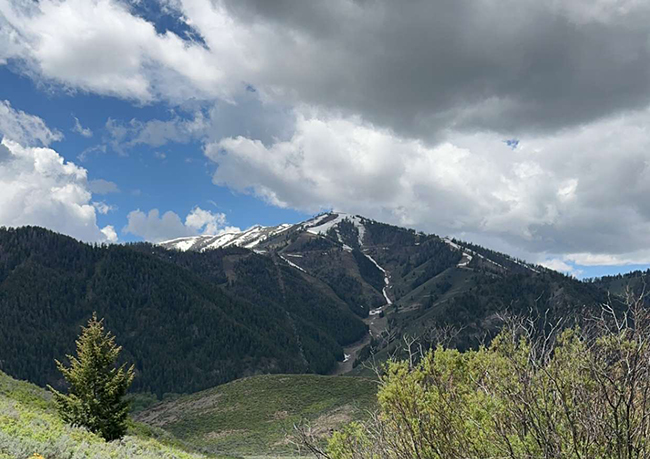BY HANNES THUM
We just experienced a truly remarkable spring. I’ve been searching and digging through the odd corners of my brain’s memories but I just can’t recall a June that was so cool, green, and wet. It’s been a fantastic example of how our local ecosystems can change when they have more water than usual.
I’ve heard some snippets of data that quantify what happened: across south-central Idaho, this spring was notable for how low the average high temperatures were, how many consecutive days of rain we had, and for how much runoff we were experiencing in our creeks and rivers.
Some of my friends were wishing that the hot days of summer would have started earlier and were disappointed that the thunderstorms kept rolling in every afternoon like clockwork. Folks around town were expressing some mixed reviews: sure, it was pretty to look at the green hillsides, but there was some sense that it was high time to be out boating, getting sunburned, and to leave the raincoats at home.
It’s almost like we forgot how dry, hot, and dusty our summers can get.
Things have changed rapidly in the past week or two. The monsoon-like pattern of rains has stopped and we have slipped into the regular routine of summer solar insolation.
July 1 was the first day that felt like “real summer” to me – the sun radiated that potent heat on my skin, the air was a little hazy, and I watched a lot of farmers in the southern half of the county laying down their first cutting of hay of the season and the dust rising behind the machines. Flowers that had been blooming so lushly through June were suddenly looking a bit more reserved as they adjusted to the more meager lifestyle that our arid region demands of them once the rain stops. The Big Wood River finally ran clear and I could even see trout finning idly in the clear riffles underneath a bridge near town.
And, of course, now the great annual drying-out-of-things will begin. Grasses have been opening up and releasing their seeds to the wind and beginning to slowly take on less moisture. Already, the hillsides surrounding our valley have lost their radiant green and are starting to show the modest tawny browns and grey-ish, sage-ish hues of the high-desert region that we call home.
Suddenly, it makes a lot more sense to get out for fresh air in the morning and to rest a bit in the shade of the afternoon. Just yesterday was the first day I saw kids jumping in the local swimming holes to cool off. I’m going to head to one of them myself today to begin that summer ritual.
The power of water is truly a striking thing to behold. The natural state of things in this very dry part of the world is to be sparing with water, to be prudent about growth, and to cling tightly to whatever humble patch of soil that one can make a life on. For just a couple of months this spring, that all went out the window and it felt like we were living in a jungle, a place of water and plenty and greenery. Now we head into the other side of the arc of the seasons – all things in balance.



